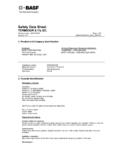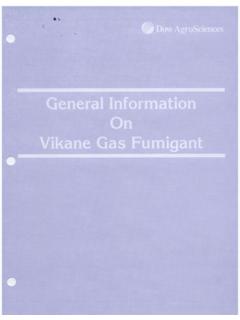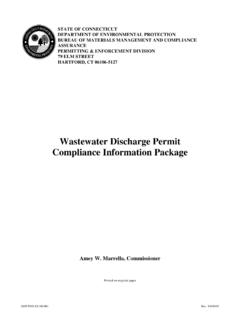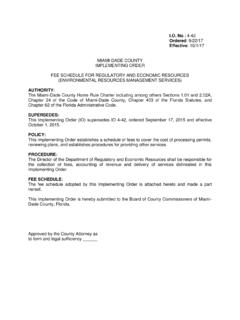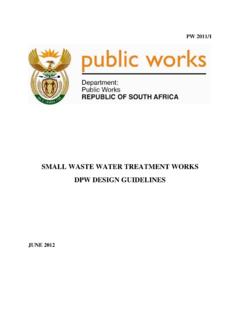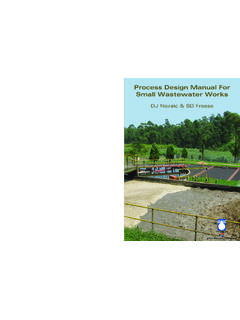Transcription of SAFETY DATA SHEET - Pestgon
1 SAFETY data SHEET Health Emergencies: INFOTRAC (800) 535-5053 1. PRODUCT AND COMPANY INFORMATION Product Identity: Bora-Care Recommended use of the chemical and restrictions on use: Termiticide, Insecticide, and Fungicide Concentrate. Read and understand the entire label before using. Use only according to label directions. It is a violation of Federal law to use this product in a manner inconsistent to label directions. Manufacturer: Nisus Corporation 100 Nisus Drive Rockford, TN 37853 Telephone: Phone: (800) 264-0870 Fax: (865) 577-5825 Emergency Phone: 800-535-5053 (INFOTRAC) SDS Date of Preparation: 01/12/16 2. HAZARDS IDENTIFICATION GHS Classification: Physical Health Environment Not Hazardous Acute Toxicity Oral Category 4 Specific Target Organ Toxicity Repeat Exposure Category 2 Reproductive Toxicity Category 2 Aquatic Acute Toxicity Category 3 GHS Label Elements: TE Statements of Hazard H302 Harmful if swallowed.
2 H361 Suspected of damaging fertility or the unborn child. H373 May cause damage to kidneys by prolonged or repeated exposure by ingestion. H412 Harmful to aquatic life with long lasting effects. Precautionary Statements P260 Do not breathe mist or vapors. P264 Wash thoroughly after handling. P270 Do not eat, drink, or smoke when using this product. P273 Avoid release to the environment. P301 + P312 IF SWALLOWED: Call a POISON CENTER or doctor if you feel unwell. P330 Rinse mouth. P501 Dispose of contents and container in accordance with local and national regulations. 3. COMPOSITION/INFORMATION ON INGREDIENTS Component CAS No. Amount Ethylene Glycol 107-21-1 40-60% Disodium Octaborate Tetrahydrate 12280-03-4 40% Non-Hazardous Ingredient Proprietary 0-20% The exact formulation is being withheld as a trade secret. 4. FIRST AID MEASURES Eye: Flush victim's eyes with large quantities of water, while holding the eyelids apart.
3 Get medical attention if irritation develops or persists. Skin: Wash skin thoroughly with soap and water. Get medical attention if irritation develops. Remove and launder clothing before re-use. Ingestion: Do not induce vomiting unless directed to do so by a medical professional. Get immediate medical attention for large ingestions or if symptoms develop or if you feel unwell. Inhalation: Remove victim to fresh air. If breathing is difficult or irritation persists, get medical attention. Most important Symptoms: May cause eye and skin irritation. Inhalation of mists may cause mild mucous membrane and respiratory irritation. Harmful if swallowed. Repeated ingestion may cause kidney damage. Indication of immediate medical attention/special treatment: Immediate medical attention is required for large ingestions. 5. FIRE FIGHTING MEASURES Suitable (and Unsuitable) Extinguishing Media: Use media appropriate for surrounding fire.
4 Cool fire exposed containers and structures with water. Specific hazards arising from the chemical: A solid stream of water or foam directed into hot, burning liquids can cause frothing. Burning may product carbon monoxide, carbon dioxide, and ethylene oxide. Special Protective Equipment and Precautions for Fire-Fighting Instructions: Firefighters should wear positive pressure self-contained breathing apparatus and full protective clothing. Contain all runoff. 6. ACCIDENTAL RELEASE MEASURES Personal Precautions, Protective Equipment, and Emergency Procedures: Evacuate spill area and keep unprotected personnel away. Wear appropriate protective clothing as described in Section 8. Avoid releases to the environment. Methods and Materials for Containment and Cleaning Up: Dike and collect liquid or absorb with an inert absorbent and place in appropriate containers for disposal. Prevent spill from entering sewers and watercourses.
5 Report releases as required by local, state and federal authorities. 7. HANDLING AND STORAGE Precautions for Safe Handling: Avoid contact with the eyes, skin and clothing. Avoid breathing mists or aerosols. Wear protective clothing and equipment as described in Section 8. Use with adequate ventilation. Wash thoroughly with soap and water after handling. Remove contaminated clothing immediately and wash before reuse. Remove PPE immediately after handling. Wash thoroughly after using and change into clean clothing. Keep containers closed when not in use. Nonrefillable container. Do not reuse containers. Product residues in empty containers can be hazardous. Follow all SDS precautions when handling empty containers. Conditions for Safe Storage, Including Any Incompatibilities: Store in a cool, dry, well-ventilated area away from incompatible materials. Keep out of reach of children. Do not freeze. Protect from physical damage.
6 8. EXPOSURE CONTROLS/PERSONAL PROTECTION Exposure Guidelines: Ethylene Glycol 100 mg/m3 Ceiling ACGIH TLV Disodium Octaborate Tetrahydrate 2 mg/m3 TWA ACGIH TLV (Inhalable) 6 mg/m3 STEL ACGIH TLV (Inhalable) Engineering Controls: Use with adequate general or local exhaust ventilation to maintain exposure levels below the occupational exposure limits. Respiratory Protection: In operations where exposure levels are exceeded, a NIOSH approved respirator with dust/mist cartridges with approved pesticide prefilter or supplied air respirator appropriate for the form and concentration of the contaminants should be used. Selection and use of respiratory equipment must be in accordance with OSHA and good industrial hygiene practice. Refer to the product label for additional information. Skin Protection: Wear impervious gloves such as butyl rubber, nitrile, neoprene, polyethylene, polyvinyl chloride, or Viton. Follow instructions for Category C on an EPA resistance category selection chart for more options.
7 Eye Protection: Wear SAFETY goggles or glasses where splashing is possible. Other: Wear long-sleeve shirts, long pants, socks and shoes when using this product. Suitable washing facilities should be available in the work area. 9. PHYSICAL AND CHEMICAL PROPERTIES Appearance And Odor: Clear viscous gel with no odor. Physical State: Viscous gel Odor Threshold: Not established Vapor Density: Not determined Initial Boiling Point/Range: >212 F (>100 C ) Solubility In Water: Soluble Vapor Pressure: Negligible Relative Density: Evaporation Rate: Not determined Melting/Freezing Point: Not determined pH: (50% solution in water) Percent Volatile: 36% by weight as water Octanol/Water Coefficient: Not determined Solubility: Soluble in water Decomposition Temperature: Not determined Viscosity: 8000-11,000 centipoise at room temperature Flammability (solid, gas): N/A Flashpoint: >220 F (104 C) TOC Autoignition Temperature: None Flammable Limits: LEL: Not determined UEL: Not determined 10.
8 STABILITY AND REACTIVITY Reactivity: Not normally reactive Chemical Stability: Stable under normal storage and handling conditions. Possibility of Hazardous Reactions: None known. Conditions to Avoid: None known. Incompatible Materials: Avoid strong oxidizing agents and aluminum. Hazardous Decomposition Products: When heated to decomposition emits carbon monoxide, carbon dioxide, and ethylene oxide. 11. TOXICOLOGICAL INFORMATION HEALTH HAZARDS: Ingestion: Harmful if swallowed. Repeated or high levels of ingestion may cause potentially fatal kidney damage. Inhalation: Inhalation of mists may cause irritation of the nose, throat and upper respiratory tract. Eye: May cause slight irritation with redness, pain and tearing. Product was not irritating in a study with rabbits. Skin: May cause irritation on prolonged or repeated contact. Product was not irritating in a study with rabbits. Negative in a guinea pig sensitization study.
9 Chronic: Ethylene glycol causes kidney damage through repeated ingestion. Sensitization: This material is not known to cause sensitization. Carcinogenicity: None of the components is listed as a carcinogen or suspected carcinogen by IARC, NTP or OSHA. Germ Cell Mutagenicity: No data available Reproductive Toxicity: Ethylene glycol has been found to cause birth defects in laboratory animals. The significance of this finding to humans has not been determined. Numerical Measures of Toxicity: Product Toxicity data : Oral rat LD50: >5000 mg/kg; Dermal rabbit LC50: >5050 mg/kg; Inhalation rat LC50: > mg/L (no mortality was observed in any test) Component Toxicity data : Ethylene Glycol: Oral rat LD50: 4700 mg/kg; Dermal rabbit LC50: 9530 mg/kg Disodium Octaborate Tetrahydrate: Oral rat LD50: 3500-4100 mg/kg; Dermal rabbit LD50: >2000 mg/kg; Inhalation rat LC50: > mg/L 12. ECOLOGICAL INFORMATION Ecotoxicity: Ethylene Glycol: LC50 Fathead Minnow: <10,000 mg/L/96 hr.
10 ; EC50 Daphnia Magna: 100,000 mg/L/48 hr; Bacterial (Pseudomonas putida): 10,000 mg/l; Protozoa (Entosiphon sulcatum and Uronema parduczi; Chatton-Lwoff): >10,000 mg/l; Algae (Microcystis aeruginosa): 2,000 mg/l; Green Algae (Scenedesmus quandricauda): >10,000 mg/l Disodium Octaborate Tetrahydrate: EC10 Green Algae: 24 mg B/L/96 hr; LC50 Daphnia Magna: 133 mg B/L/48 hr; NOEC-LOEC Daphnia Magna: 6-13 mg B/L/21-day; LC50 Limanda limanda: 74 mg B/L/96 hr; LC50 Rainbow Trout: 150 mg B/L/24-day, 100 mg B/L/32-day; LC50 Goldfish: 46 mg B/L/7-day, 178 mg B/L/3-day This product is classified as harmful to the aquatic environment. Releases to the environment should be avoided. Persistence and Degradability: Ethylene glycol is readily biodegradable (97-100% in 2-12 days). Boron is naturally occurring and ubiquitous in the environment. Disodium Octaborate Tetrahydrate degrades to boron. Bioaccumulative Potential: Ethylene glycol: A BF of 10 reported for ethylene glycol in fish, Golden ide (Leuciscus idus melanotus), after 3 days of exposure suggests the potential for bio concentration in aquatic organisms is low.





